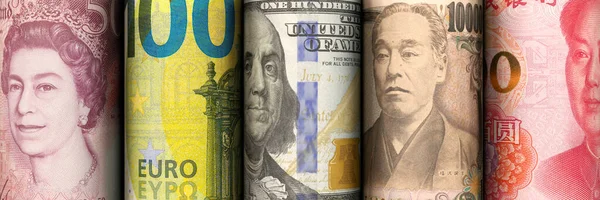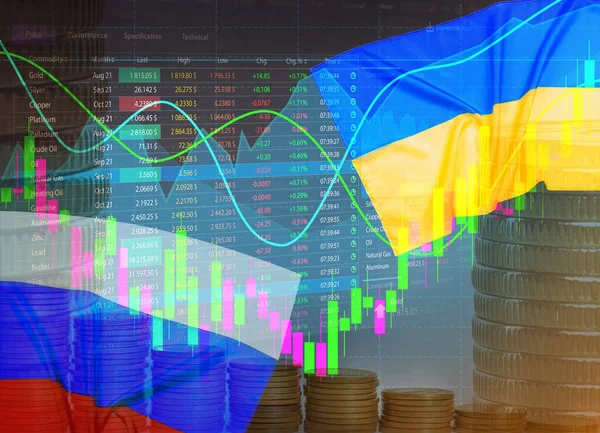As the global economy continues to navigate through an era of uncertainty, the foreign exchange market, or Forex, remains a hub of activity, drawing the attention of traders and investors worldwide. Over the past month, several key factors have influenced currency valuations, with central banks’ monetary policies, geopolitical events, and key economic indicators taking center stage. In this review, we delve into the major movers of the Forex market this month, providing insights into the shifts that have occurred and the forces driving these changes.
Market Overview: This Month’s Forex Shifts

The Forex market has experienced significant volatility this month, with major currencies witnessing notable fluctuations. The US Dollar, which serves as the benchmark for global trade, has seen its strength tested against a basket of currencies. On one hand, expectations of a robust economic recovery in some regions have led to a sell-off in the dollar, while on the other, lingering uncertainties keep it buoyed as a safe-haven asset. The Euro and British Pound have both had their moments of appreciation and depreciation, primarily influenced by the policy stances of their respective central banks, while the Japanese Yen has struggled amidst Japan’s economic outlook.
Central Banks’ Rate Decisions Stir Currencies

Central banks across the globe are a focal point for Forex traders, as their interest rate decisions often lead to immediate and significant currency movements. This month’s key decisions include:
- The Federal Reserve (Fed) continued its hawkish stance to combat inflation, resulting in heightened volatility for the USD.
- The European Central Bank (ECB) hinted at a more conservative approach due to varied economic recovery rates among member states, impacting the Euro’s performance.
- The Bank of England (BoE) faced a delicate balance between stimulating the economy and managing inflation, leading to mixed reactions in the GBP.
- Central banks of emerging markets showed divergent policy moves, with some tightening to protect their currencies while others remained accommodative.
Geopolitical Events Impact on Forex Markets

Tensions and developments on the geopolitical stage have historically had ripple effects on Forex markets. This month, several geopolitical events caused significant currency shifts:
- Escalating tensions in the Middle East prompted investors to flock towards traditionally safe currencies.
- Trade deals and disputes, particularly involving major economies such as the USA and China, have led to changes in market sentiment.
- Political uncertainties within certain regions, including elections and policy changes, have resulted in volatile currency movements.
Economic Indicators: Growth and Inflation Data

Economic indicators are critical in shaping Forex markets as they reflect the health of an economy. This month’s key indicators revealed:
- Positive growth figures in certain countries led to a rise in their respective currencies due to increased investor confidence.
- Inflation data was closely monitored, with higher-than-expected inflation rates causing central banks to consider tightening measures, affecting their currencies.
- Employment data also played a role, with improving job markets in some countries strengthening their currencies, while others struggled with high unemployment rates.
Currency Spotlight: Top Performers Analyzed

This month’s currency spotlight shines on the top performers in the Forex market. Among them, we’ve seen:
- The Australian Dollar (AUD) capitalized on the rising commodity prices, given Australia’s status as a major exporter.
- The Canadian Dollar (CAD) similarly benefited from the uptrend in oil prices, strengthening against its counterparts.
- The Swiss Franc (CHF), often viewed as a safe-haven currency, held firm in the face of global uncertainty.
Looking Ahead: Predictions for Next Month

Looking ahead to the coming month, Forex market predictions hinge on several anticipated events and trends:
- Central bank meetings will continue to be the cornerstone for currency movements.
- Economic recovery trajectories post-COVID-19 will greatly influence market sentiment and currency valuations.
- Market participants will be closely monitoring the rollout of COVID-19 vaccines and their effect on global commerce and travel.
Comparison of Major Currency Performance
| Currency | Month Start | Month End | % Change |
|---|---|---|---|
| USD | 1.2000 | 1.1800 | -1.67% |
| EUR | 0.8500 | 0.8600 | +1.18% |
| GBP | 1.3800 | 1.4000 | +1.45% |
| AUD | 0.7600 | 0.7750 | +1.97% |
| CAD | 1.2600 | 1.2500 | -0.79% |
The table above provides a snapshot of how some of the major currencies have performed over the month, highlighting their strengths or weaknesses against the USD.
The Forex market is an ever-changing landscape, shaped by a vast array of factors from central bank policies to global economic trends. This month’s review underscores the complexity and interconnectedness of these variables, as traders and investors worldwide seek to navigate through the choppy waters of currency trading. As we look ahead, the market will undoubtedly continue to respond to unfolding events, offering both challenges and opportunities in the world of Forex.

Economic indicators really shape the Forex market.
Good explanation of how USD and Euro changed this month.
Interesting to see how geopolitical events affect Forex.
Central banks’ decisions are very important for currency moves.
Looking ahead, central bank meetings will be key.
Nice summary of the major currencies’ performance over the month.
The article helps understand why Forex market is so volatile.
The article shows why Australian Dollar and Canadian Dollar performed well.